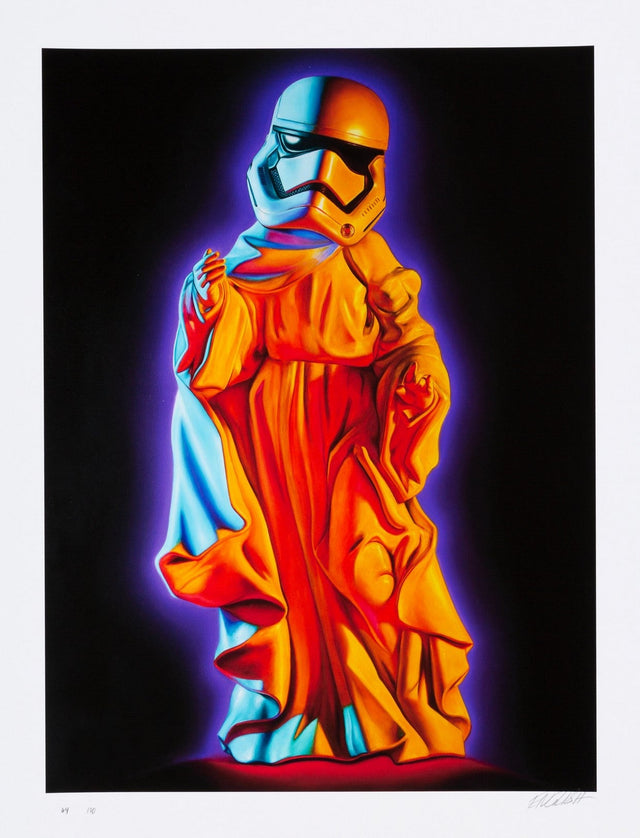
God
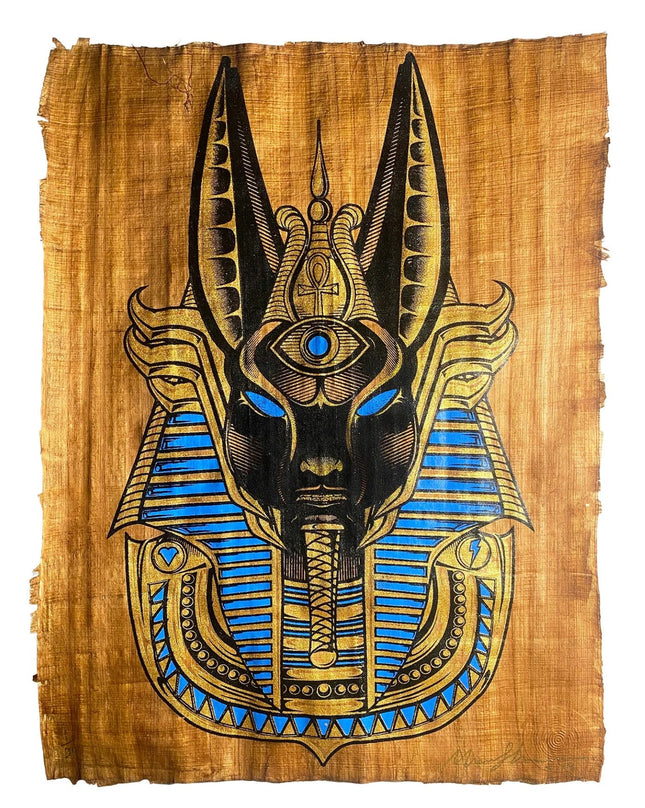
Marwan Shahin Anubis Afterlife Silkscreen Print by Marwan Shahin
Anubis Afterlife 4-Color Hand-Pulled Diamond Dust Limited Edition Silkscreen Print on Egyptian Papyrus Paper by Marwan Shahin Street Art Pop Artwork Artist. 2022 Signed & Numbered Limited Edition of 30 Size 14x17.5 "Shahin Studios is delighted to present ANUBIS AFTERLIFE by Marwan Shahin; this is the conclusion of months of experimenting with different stains to age the Papyrus paper. The new edition of the artwork is interpreted with hand-pulled four color Silkscreen print on Soy-Stained Authentic Egyptian Papyrus, and each print intricately arranged with a lattice of black Diamond Dust, to produce visually intoxicating kaleidoscope-like effects." -Marwan Shahin. The Creative Odyssey of Marwan Shahin's "Anubis Afterlife" "Anubis Afterlife," a mesmerizing creation by Marwan Shahin, represents a striking convergence of ancient tradition and contemporary artistic practice. As a street pop artwork, this limited edition silkscreen print on Egyptian papyrus paper encapsulates the spirit of modern pop art while paying homage to the rich iconography of ancient Egypt. The use of authentic papyrus as a medium is a salute to the time-honored methods of artistic expression, further enhanced by Shahin’s innovative aging techniques that lend the work an air of antiquity. Artistic Alchemy on Papyrus Shahin, an Egyptian street art pop artwork artist, embarked on a meticulous process of experimentation to perfect the aging of the papyrus, aiming to achieve a soy-stain effect that imbues the paper with an ethereal quality reminiscent of historical artifacts. The artwork, a limited edition of 30 and 14x17.5 inches, features the god Anubis, the ancient Egyptian deity associated with mummification and the afterlife. This figure is intricately detailed with four hand-pulled silkscreen layers, culminating in a visually arresting and richly symbolic composition. The incorporation of black diamond dust in the artwork adds a tactile dimension that catches the light, creating kaleidoscopic effects that enhance the mystical aura of the piece. Diamond dust, a material once popularized by Andy Warhol, reflects Shahin's ingenuity in combining traditional screen-printing techniques with the luxurious embellishments in pop art. The resulting work is an homage to Shahin's homeland's cultural heritage, street art's vibrant energy, and the glossy sheen of pop art. Marwan Shahin's Visual Fusion of Past and Present "Anubis Afterlife" is a testament to Marwan Shahin's creative vision, where Egyptian art's rich legacy intersects with street pop art's bold immediacy. Through the figure of Anubis, Shahin bridges millennia, conversing with the symbols of ancient mythology while engaging with the aesthetics of the present. The choice of Anubis, a deity symbolizing the passage to the afterlife, suggests exploring themes such as transition, transformation, and the eternal cycle of life and death. This piece's introduction of street pop art into the pantheon of Egyptian motifs presents a unique narrative layer. In much the same way street art often appropriates and recontextualizes images and symbols from mainstream culture, Shahin reclaims an icon from his cultural history, reinterpreting it through a modern lens. This reimagining places "Anubis Afterlife" within the lineage of pop art that challenges and redefines the boundaries between high and low culture. A Tapestry of Time Woven by Marwan Shahin Marwan Shahin's "Anubis Afterlife" is a luminous example of how contemporary artists can delve into the wellspring of their heritage while contributing to the global convert conversation, underscores the potential of street pop art and graffiti to serve as a platform for cultural storytelling and artistic innovation. Through his fusion of mediums and motifs, Shahin crafts a visual tapestry that spans the ancient and the avant-garde, inviting onlookers to contemplate the seamless continuity between history and modernity. In pop art and street art, Shahin's work exemplifies how traditional elements can be re-envisioned to resonate with new audiences. His intricate layering of colors and materials transcends mere reproduction, offering an immersive experience that reflects the past and is a beacon for the future of artistic expression. "Anubis Afterlife," with its textured narrative and visual splendor, is a fine art collectible and a piece that captures the dynamic spirit of street art, embodying the pulse of a culture that reverberates through time.
$890.00$757.00
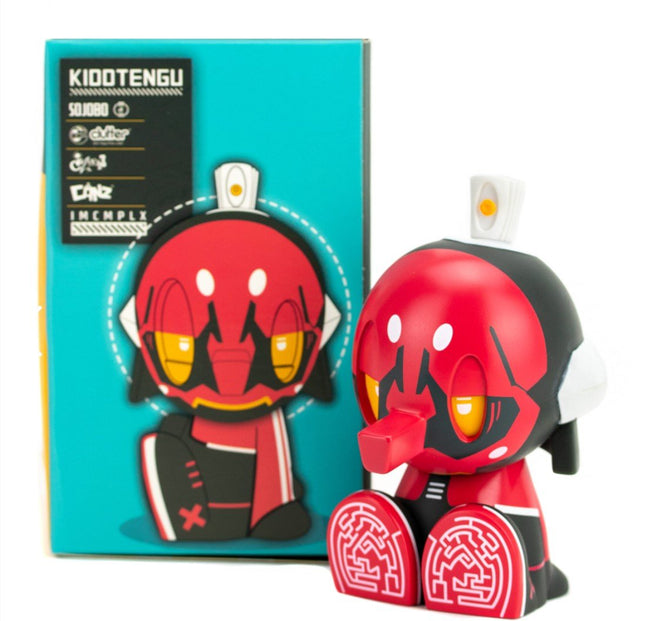
Czee13 The Kidd Tengu Red 5oz Canbot Canz by IMCMPLX x Czee13
The Kidd Tengu Red 5oz Canbot Canz Limited Edition Vinyl Art Toy Collectible Artwork by Street Graffiti Artist IMCMPLX x Czee13. 2022 Limited to 100- This 5oz futuristic warrior turned Canbot Canz combatant wears the traditional Tengu mask and sits amongst a pantheon of Gods within the stylized IMCMPLX universe known as The God Complex series. Includes IMCMPLX Signed Tagged & Numbered Sticker #11 of 20
$322.00$206.00
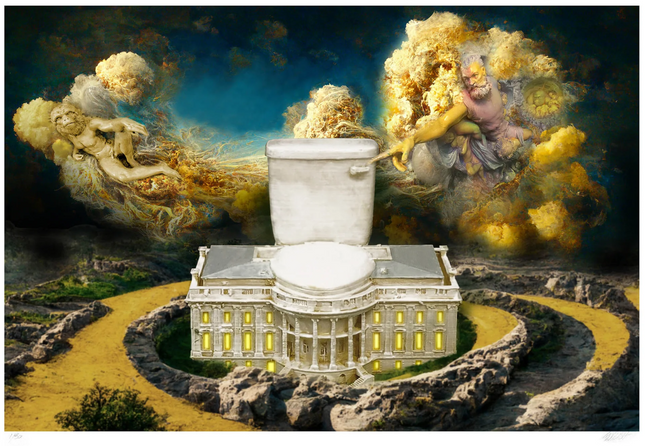
Ron English Flush Giclee Print by Ron English
Flush Giclee Print by Ron English Artwork Limited Edition Print on Fine Art Paper Graffiti Pop Street Artist. 2022 Signed & Numbered Limited Edition of 30 Artwork Size 37x25 Flush Giclee Print by Ron English is an artwork created by the contemporary artist Ron English. Ron English is an American artist who is known for his provocative, colorful, and often satirical works that combine elements of pop culture, advertising, and contemporary politics. He has been referred to as the "Godfather of Street Art" and has been influential in the development of street art and culture jamming. A giclee print is a high-quality, fine art digital print made using a specialized inkjet printer. The term "giclee" is derived from the French word "gicler," which means "to spray" or "to squirt." Giclee prints are typically created using fade-resistant archival inks and are printed on high-quality, acid-free paper or canvas, resulting in a print that has the look and feel of an original piece of art. The Flush Giclee Print by Ron English likely features the artist's signature mix of cultural commentary, humor, and surrealism. However, without a specific description or image of the artwork, it is impossible to give a detailed analysis of the content and subject matter of the piece. If you're interested in acquiring or learning more about this particular print, consider reaching out to an art gallery or the artist himself to obtain more information.
$3,472.00
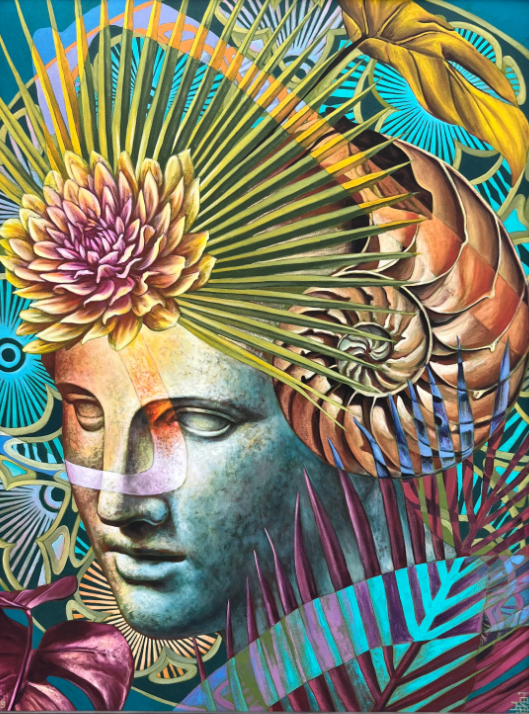
Beau Stanton Symbiosis Archival Print by Beau Stanton
Symbiosis Archival Print by Beau Stanton Limited Edition on Cotton Fine Art Paper Pop Graffiti Street Artist Modern Artwork. 2022 Signed & Numbered Print Limited Edition of 75 Artwork Size 18x24 Archival Pigment Fine Art. The Intersection of Styles in Beau Stanton's Symbiosis Archival Print In the vibrant landscape of contemporary art, Beau Stanton's "Symbiosis" emerges as a striking example of Street Pop Art and Graffiti Artwork. The limited edition archival print on cotton fine art paper is a testament to Stanton's mastery in blending classical art with modern sensibilities, encapsulated within an 18x24 artwork size. This piece, created in 2022, is part of a highly exclusive series, with only 75 signed and numbered prints available, each bearing the artist's unique signature. Stanton's "Symbiosis" is not merely an art piece but a visual exploration of the harmonious relationship between historical iconography and the explosive color palette synonymous with street and pop art. The artwork is infused with a sense of timelessness through its usage of archival pigment, ensuring that the vibrancy of the print remains a lasting tribute to the fusion of art styles. Crafting Visual Narratives in Modern Street Pop Art Stanton has been recognized for his ability to craft intricate visual narratives that communicate complex themes through imagery layers. "Symbiosis" is a vivid illustration of this narrative technique. The piece showcases a serene, classical face that emerges from the lush flora and fauna surrounding it, creating a dialogue between the natural world and human history. The juxtaposition of a classically rendered visage with modern, stylized elements of flora illustrates the symbiotic relationship between the past and present, a recurring theme in Stanton's work. The fine art paper serves as the canvas for this symbiotic dance, where the textural contrasts highlight the depth of Stanton's visual storytelling. The choice of medium is deliberate, bridging the gap between traditional artistry and contemporary methods. It is a nod to the artist's respect for classical techniques while embracing the dynamic and accessible nature of street art. Beau Stanton's Place in Contemporary Art Beau Stanton's contribution to the art world through works like "Symbiosis" solidifies his position as a modern visionary capable of transcending the boundaries of Street Pop Art and Graffiti Artwork. His work is not confined to the streets from which the genre derives its name but extends to galleries and private collections, indicating a shift in how street-inspired art is perceived and valued. The limited availability of "Symbiosis" further elevates its status within the art community. Collectors and fans of modern art clamor for the chance to own a piece of Stanton's vision, which is as much a collectible treasure as a piece of cultural commentary. The art's scarcity also speaks to the burgeoning market for street-inspired art, where exclusivity and originality are highly prized. In modern art, the "Symbiosis" archival print stands out as a symbol of the evolving nature of Street Pop Art and Graffiti Artwork. Beau Stanton's fluid amalgamation of historical and contemporary artistic expressions within this print challenges and expands the boundaries of what street art can be. It indicates that the art form is not static but is constantly redefined by artists like Stanton, who dare to imagine and create beyond conventional frameworks.
$361.00





